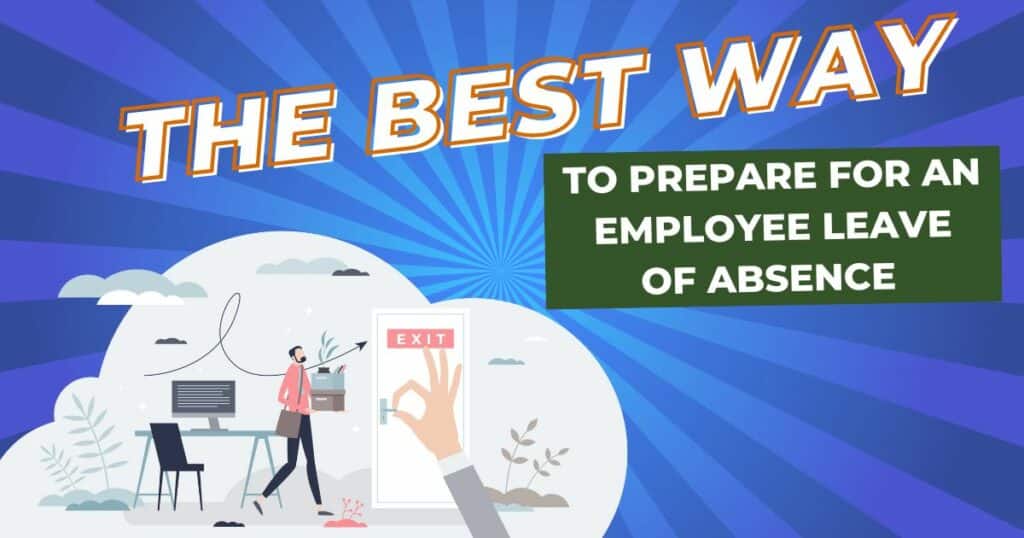The best way to prepare for an employee leave of absence
February 16th, 2023 | 3 min. read
By Anna Noa

Having an employee leave of absence policy in place can be a huge benefit if one of your employees goes through a major life change. Take it from me. As I write this, I've had four cups of coffee to make up for the barely four hours of sleep I got last night – this is my formula to make it through my first day back in the office after maternity leave. Thankfully, after a few weeks of leave, nights like these are becoming more and more uncommon as my baby girl has learned to sleep for longer periods of time. Having the time off allowed me and my family to adjust to our new normal before jumping back into work.
Whether it’s an addition to the family or a personal illness, life is filled with unexpected events. And when big events like this happen, an individual may need to request leave from their employer. Taking time off from your job can be daunting for some, but there are a few things you can do to make your time off less stressful. Keep reading for some tips that helped me as I prepared to take my own leave:
Read and make sure you understand your leave of absence policy
I get it – you haven’t looked at the employee handbook since your first day on the job when you signed your name promising that you read and understood each and every page... Well, on the off chance you don’t remember all those important policies, now is DEFINITELY the time to take a second look.
There will likely be a few different types of leave policies in your handbook based on the leave you plan to take. In some cases, there are federally-mandated leave policies that must be offered depending on the company’s size or employee count (like FMLA). It’s important to note, however, that many policies require an employee to have worked at the company for a certain period of time before they are eligible to receive that benefit. Read the policy carefully to understand just how much time, if any, you are eligible for.
Have a conversation with your manager/boss in advance
Depending on your relationship with your superiors, this can feel like a scary conversation, but communicating early and openly about taking leave is an important part of setting everyone up for success. Assuming your company has an established leave policy in the handbook, you can use that policy as the baseline for your conversation. Start by letting your employer know that you will need to take some leave and the reason for your leave.
While some types of leave your employer is federally required to offer, others are up to their discretion. For this reason, it is wise to put your request in writing in case your employer needs time to consider your request. During this initial meeting, you should also take the time to ask any clarifying questions you may have about the policy – this could range from how long you’re permitted to be out, to what pay will look like while you’re on leave. Finally, broadly discuss the timeline of your leave. In doing so, your employer can start to realistically think ahead about how they will need to get your responsibilities covered.
Prepare, prepare, prepare
Outline your weekly responsibilities
The best way to ensure that things don’t fall through the cracks while you’re gone is to simply write down everything you do. It may seem excessive - especially if there are other co-workers with the same role – but trust me, it will be worth it. Everyone does things a little differently. Your co-worker Michelle likely doesn’t know that Marcus really does need that day-before-reminder to his meet his project deadline. Outlining your weekly to-do’s will ensure that you and your manager are accounting for your whole scope of work while you are out.
Create a plan for execution
Now that your responsibilities are clearly defined, it’s time to make a plan. It is usually best to include your direct manager/supervisor in this discussion. After all, they likely have expectations about what you should work ahead to complete, as well as know who on the team has the capacity to help carry your load while you are gone. Together, you can also decide if there are any tasks that don’t need to be continued in your absence.
Work ahead and delegate
Depending on the reason for your leave, working ahead may not be possible. But if you are fortunate enough to know of your leave in advance, working ahead will ultimately put you in a better position when you return. Prioritize tasks and projects you can finish. As you get closer to your actual leave, you can begin to delegate your remaining tasks with the help of your supervisor. Find a time to train any co-workers that need to complete your responsibilities and make sure to pass off logins or files that they might need so no one is stuck once you are out of the office.
Taking leave of some sort is something many employees will need to do in their careers. It shouldn't cause anxiety. With open communication, understanding, and preparation, everyone can be prepared for an employee to take leave when necessary.
Curious about how to make sure your PTO policy is both generous and practical for your industry? Check out our blog here.
Topics: